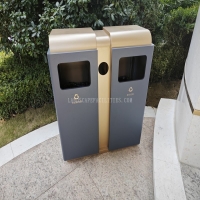Welcome to the website for landscape facilities products and knowledge.
How does the table’s design handle exposure to pet activity or claw marks?
Contemporary table designs have evolved significantly to address the challenges of pet ownership, particularly when it comes to resisting scratches and damage from daily pet activities. Manufacturers now incorporate advanced materials and construction techniques specifically engineered to withstand the wear and tear caused by pets.
The foundation of pet-resistant tables begins with material selection. Engineered wood products with high-pressure laminate surfaces provide exceptional scratch resistance, outperforming traditional solid wood. These surfaces are designed to disperse pressure and prevent permanent marking from pet claws. Metal tables with powder-coated finishes offer another durable alternative, creating a hard surface that resists scratching while being easy to clean.
Surface treatments play a crucial role in protection. Many manufacturers apply industrial-grade lacquers and polyurethane coatings that create a protective barrier between the table surface and pet claws. These coatings are typically measured in microns of thickness, with higher quality tables featuring multiple layers for enhanced protection. The chemical composition of these finishes allows them to absorb impact without showing visible damage.
Table edge design represents another important consideration. Rounded or bevelled edges are less susceptible to damage from pet activity compared to sharp corners. The geometry of these edges distributes force more evenly, making them less likely to chip or show wear patterns from pets brushing against them repeatedly.
For glass table tops, manufacturers utilize tempered glass with scratch-resistant coatings. The tempering process not only strengthens the glass but also makes it more resistant to surface abrasions. When scratches do occur on treated glass surfaces, they tend to be shallower and less noticeable than on untreated surfaces.
Maintenance features are equally important. Many modern tables incorporate surfaces that are both scratch-resistant and easy to clean, addressing the dual challenges of claw marks and pet accidents. Non-porous materials prevent liquid absorption while maintaining their structural integrity against scratching.
The construction methodology also contributes to durability. Tables designed for pet-friendly environments often feature reinforced joints and stable bases that prevent wobbling – a common issue when pets lean against or brush past furniture. This structural stability reduces movement that could otherwise lead to scratching incidents.
Advanced composite materials represent the latest innovation in pet-resistant furniture. These engineered materials combine polymers, resins, and wood fibers to create surfaces that mimic natural wood aesthetics while providing superior resistance to scratches and impacts. The molecular structure of these composites allows them to flex slightly under pressure, then return to their original shape without permanent deformation.
Ultimately, the effectiveness of a table's design against pet damage depends on the integration of multiple protective elements: material composition, surface treatments, structural engineering, and maintenance considerations. By addressing these factors comprehensively, modern furniture manufacturers create tables that maintain their appearance and functionality despite active pet households.
Related search:

Recommendation
Double-bucket garbage bin, outdoor, metal, multi-color, powder-coated, double-bucket trash can